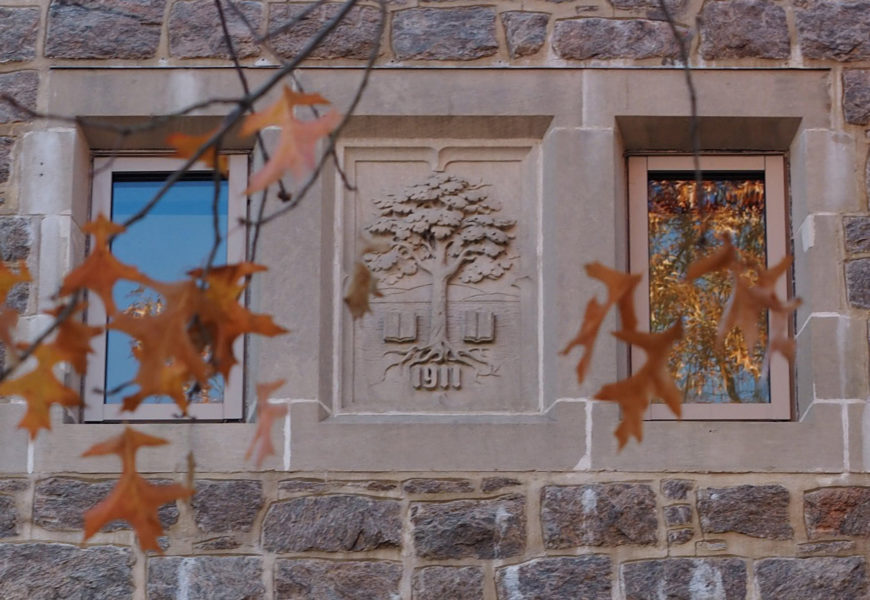New London Hall. Photo courtesy of Sophia Angele-Kuehn.
Connecticut College’s Class of 2022 marks the largest group of first-year students the College has ever welcomed, selected from its equally record-setting sized pool of applicants. The College received 362 applications in the first and second rounds of Early Decision and 6,071 applications in the regular decision rounds. 37.8% of applicants were accepted into the College throughout the process, and the school yielded 21.04% of these students.
Andrew Strickler, Dean of Admissions and Financial Aid, reports that “further development and understanding of the Connections curriculum, waiving the application fee to increase access to a Conn education, and continued enhancement of recruitment travel” all contribute to the numbers the school saw in the spring season of admissions. The College also credits its renowned career program and encouragement of global engagement for drawing in such large numbers of interests among prospective students. Whether or not these factors were actually as influential in the decisions of applying students is unclear.
Record-breaking numbers represent a trend among other NESCAC schools in the 2018 admissions process as well. Colby College had its most selective year yet, admitting just 13% of its 12,314 applicants. For the first time, Hamilton College’s applicant numbers broke 6,000, with 6,240. Middlebury College also experienced its largest applicant pool thus far, with 9,230 applicants and 1,696 enrollees. Our neighbors in Hartford at Trinity College noted in its data the highest number of first-generation and international students included in their class of 2022. Across the board, small liberal arts schools are seeing major growth with the number of students they are attracting.
In an effort to increase applications, our peer schools have also reduced steps within the application process. Bates College removed its required supplemental essay on its application this past year. Bates boasts 550 members of its 2022 class from the largest application pool in the school’s history with 7,685 applications.
The incentive for schools to remove such items from their application rests in the persuasion of numbers. Although the number of admitted students has increased in certain cases as applicant numbers rise, the growth of enrolled students is nowhere near proportional to the rate in which students are applying to these schools. With little extra needed to complete an application, choosing to apply to an institution without extra requirements is widely accessible. Schools benefit from seeing their acceptance rates fall as their application numbers rise because institutions want to be perceived as selective and competitive. A lowering acceptance rate may indicate, to some college customers, that a school is increasingly desirable, whether or not this is the actual consensus amongst applicants.
An additional concern for schools involves money. The 2017-2018 total cost of attendance at Connecticut College was reported to be $68,440. The 2018-2019 year attendance cost is stated to be $71,970. Tuition is increasing throughout the country, and it once again demonstrates the role of numbers. Schools are caught in competition with each other to appear selective and competitive, while also raising revenue from tuition. Some schools, Connecticut College included, have eliminated their application fees, which is certainly an attractive quality for prospective students. However, schools must then find other means to bring in that would-be revenue.
Connecticut College has the second lowest endowment among NESCAC institutions, and the school’s revenue is heavily dependent upon tuition and room and board expenses. The College sustained a near $300 million endowment as of 2017. According to Fiscal Year 2016 tax data, the College took in $111,261,000 in revenue from tuition and room and board, nearly half the value of our estimated endowment. The College’s endowment is significantly lower in comparison to peer institutions, and previous class years have included notably fewer members than the Class of 2022. The size inflation of the first-year class suggests the College may be attempting to make up for lost revenue.
Year-by-year, assessing how application data change and stagnate amongst colleges is challenging. Numbers are bound to fluctuate by the nature of the market. However, one thing to keep in mind is finding tipping point at which application numbers and enrollment drop due to financial restraints caused by the competitive and constraining education industry. With the application trends emerging amongst smaller liberal arts institutions, how far will these schools go until they are no longer able to support these patterns or student body sizes? •
CORRECTION: An earlier version of this article stated that Connecticut College had the lowest endowment among NESCAC institutions. It is in fact the second lowest after Bates College.









